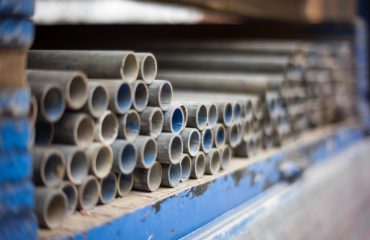body {
font-family: sans-serif;
line-height: 1.6;
}
h1, h2, h3 {
color: #333;
}
img {
max-width: 100%;
height: auto;
}
Steel, the backbone of countless industries, demands rigorous quality control. From skyscrapers to bridges, the integrity of steel structures is paramount. Ultrasonic testing (UT) has emerged as a crucial non-destructive testing (NDT) method, providing a powerful window into the internal structure of steel components, revealing hidden flaws and ensuring structural soundness. This comprehensive guide delves into the world of ultrasonic testing in steel inspection, exploring its principles, applications, advantages, limitations, and future prospects.
The Fundamentals of Ultrasonic Testing in Steel
Ultrasonic testing leverages high-frequency sound waves (typically above 20 kHz, often exceeding several MHz) to inspect materials. A transducer, acting as both a transmitter and receiver, emits these waves into the steel. These waves propagate through the material, reflecting off internal discontinuities such as cracks, voids, inclusions, or laminations. The time it takes for these echoes to return to the transducer is precisely measured, providing information about the location, size, and nature of the flaw. The technique relies on the principle of acoustic impedance – the resistance a material offers to the passage of sound waves. Differences in acoustic impedance between the steel and a defect cause reflections, which are then analyzed.
Different UT techniques exist, including pulse-echo (the most common), through-transmission, and resonance testing, each suited for specific applications and types of defects.
Applications of Ultrasonic Testing in Steel Structures
The versatility of ultrasonic testing makes it invaluable across various steel inspection scenarios:
- Weld Inspection: Detecting cracks, porosity, lack of fusion, and other weld defects is crucial for ensuring the structural integrity of welded joints. UT is exceptionally effective in this area.
- Casting Inspection: Identifying shrinkage cavities, gas porosity, and inclusions in steel castings is vital for quality control. UT allows for the detection of these internal flaws before they compromise the component’s strength.
- Forgings Inspection: Similar to castings, forgings can contain internal flaws. UT helps identify these imperfections, ensuring the forging meets required specifications.
- Thickness Measurement: Determining the remaining thickness of steel components, particularly in corrosion-prone environments, is crucial for safety assessments. UT offers precise thickness measurements.
- Pipe Inspection: Detecting corrosion, pitting, and cracks in steel pipes is essential for preventing leaks and maintaining pipeline integrity. UT is widely used for in-service inspection of pipelines.
Advantages of Ultrasonic Testing for Steel Inspection
Ultrasonic testing offers several significant advantages over other NDT methods:
- High Sensitivity: UT can detect very small flaws, even those deep within the material.
- High Accuracy: It provides precise information about the location, size, and orientation of defects.
- Versatility: Applicable to a wide range of steel components and shapes.
- Portability: Portable ultrasonic testing equipment allows for on-site inspection.
- Cost-Effective: While initial investment can be significant, UT’s efficiency can lead to long-term cost savings by preventing catastrophic failures.
Limitations of Ultrasonic Testing in Steel
Despite its many advantages, UT has certain limitations:
- Surface Preparation: Accurate results often require proper surface preparation, such as cleaning and coupling the transducer with a couplant (e.g., gel or water).
- Operator Skill: Interpretation of ultrasonic signals requires skilled and experienced technicians.
- Material Attenuation: The attenuation of ultrasonic waves varies with the material and frequency, affecting the depth of penetration.
- Complex Geometries: Inspection of complex geometries can be challenging, requiring specialized techniques and transducers.
- Cost of Equipment: The initial investment in ultrasonic testing equipment can be substantial.
Future Trends in Ultrasonic Testing for Steel
The field of ultrasonic testing is constantly evolving. Future trends include:
- Automated UT Systems: Increased automation will improve efficiency and reduce human error.
- Phased Array UT: This advanced technique allows for faster inspections and improved defect characterization.
- Artificial Intelligence (AI) and Machine Learning (ML): AI and ML are being integrated into UT systems to enhance data analysis and defect classification.
- Improved Transducer Technology: Developments in transducer technology are leading to improved sensitivity and resolution.
- Integration with other NDT methods: Combining UT with other NDT techniques, such as radiography or magnetic particle inspection, can provide a more comprehensive assessment.
In conclusion, ultrasonic testing is an indispensable tool for ensuring the quality and integrity of steel structures. Its accuracy, sensitivity, and versatility make it a cornerstone of modern non-destructive testing. As technology continues to advance, ultrasonic testing will play an increasingly critical role in safeguarding the safety and reliability of steel components across a vast range of industries.
Tags: Ultrasonic Testing, Steel Inspection, NDT, Non-Destructive Testing, Weld Inspection, Steel Quality Control




